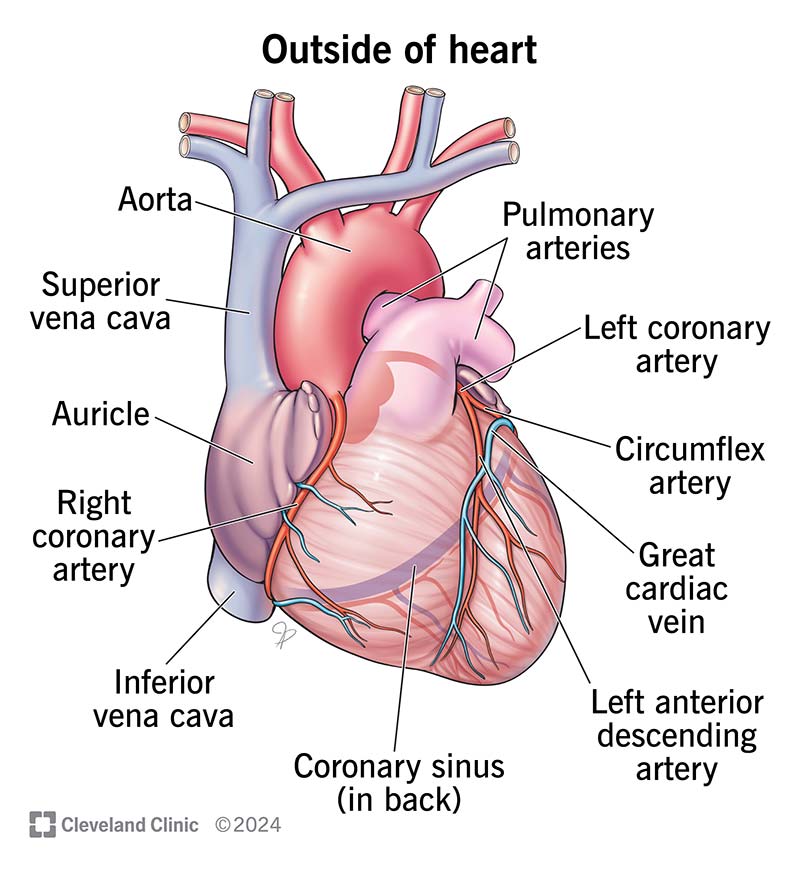The heart
The heart and its external structures

What is the heart?
The heart is a fist-sized organ that pumps blood throughout your body. It’s your circulatory system’s main organ. Muscle and tissue make up this powerhouse organ.
Your heart contains four muscular sections (chambers) that briefly hold blood before moving it. Electrical impulses make your heart beat, moving blood through these chambers. Your brain and nervous system direct your heart’s function.
What is the function of the heart?
Your heart’s main function is to move blood throughout your body. Blood brings oxygen and nutrients to your cells. It also takes away carbon dioxide and other waste so other organs can dispose of them.
What are the parts of the heart?
The parts of your heart are like the parts of a building. Your heart anatomy includes:
- Walls.
- Chambers that are like rooms.
- Valves that open and close like doors to the rooms.
- Blood vessels like plumbing pipes that run through a building.
- The right atrium receives blood from the veins that has already circulated through the body and pumps it over to the right ventricle.
- The right ventricle passes the blood on to the pulmonary artery, which sends it to the lungs to pick up oxygen.
- The left atrium receives the now oxygen-rich blood from the lungs and pumps it into the left ventricle.
- The left ventricle pumps the oxygen-rich blood to the body through a large network of arteries. The contractions of the left ventricle, the strongest of the four chambers, are what create blood pressure in the body.
- The tricuspid valve that controls blood flow from the right atrium to the right ventricle.
- The pulmonary valve that regulates blood flow from the right ventricle to the pulmonary arteries.
- The mitral valve that opens to allow blood to move from the left atrium to the left ventricle.
- The aortic valve that allows oxygen-rich blood to move from the left ventricle to the aorta, the body’s largest artery
- The right atrium receives oxygen-poor blood from the body and pumps it to the right ventricle through the tricuspid valve.
- The right ventricle pumps the oxygen-poor blood to the lungs through the pulmonary valve.
- The left atrium receives oxygen-rich blood from the lungs and pumps it to the left ventricle through the mitral valve.
- The left ventricle pumps the oxygen-rich blood through the aortic valve out to the rest of the body.


This is very nice educating as well will copy it for my niece.
ReplyDeleteI forgot about this whole things..Thanks for the information.
ReplyDelete